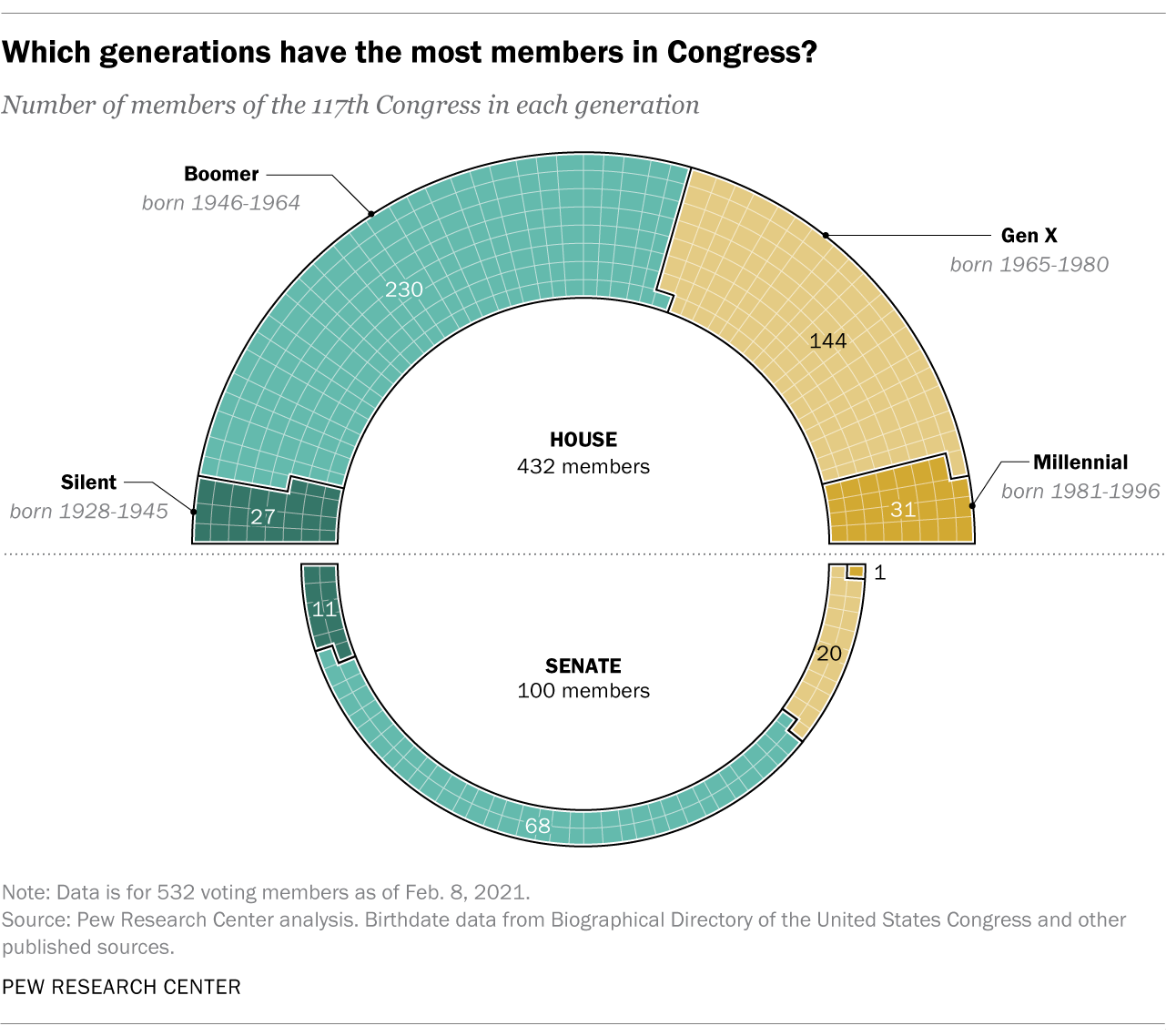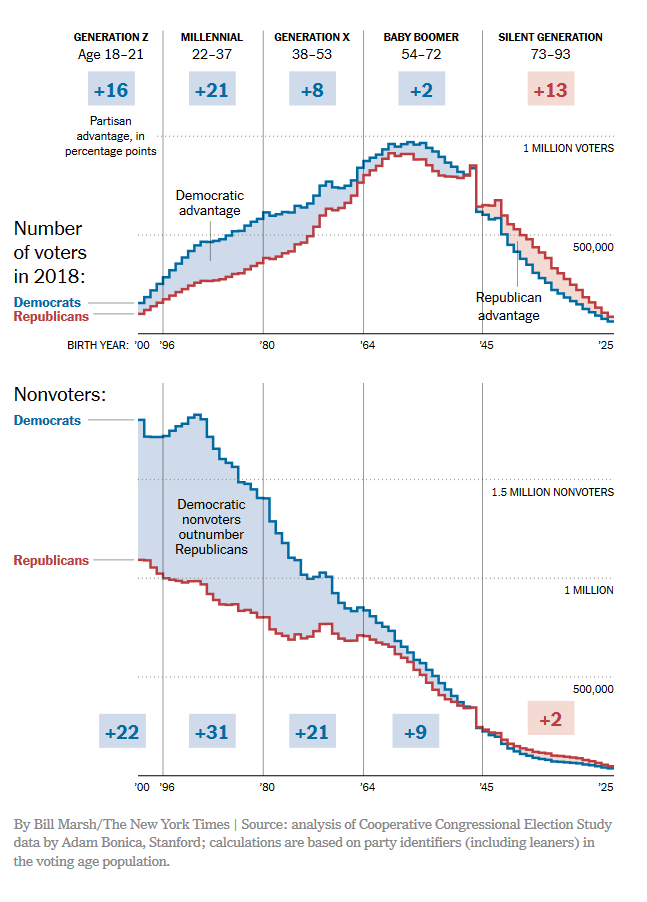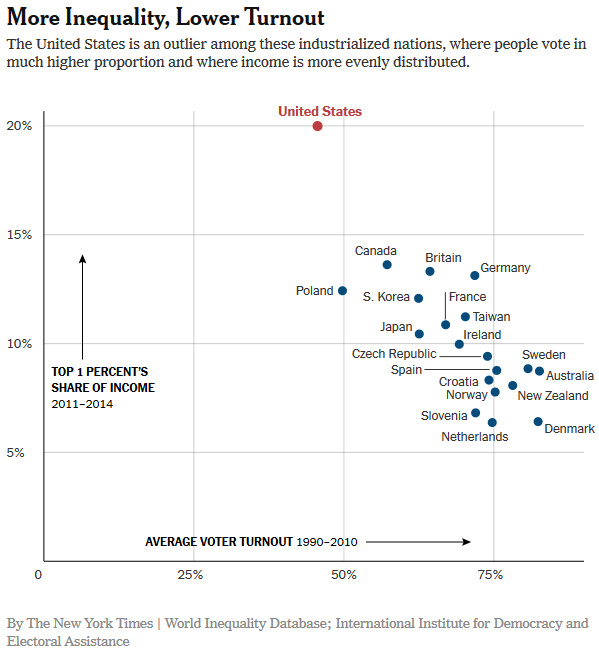The Daily Escape:

Canyonlands NP, UT – photo by Xymic
Like Biden, Wrongo is a member of the Silent Generation, but he always confuses the names and age groupings of the generational cohorts. Here’s the breakdown by cohort, age and number of each:
- Silent Generation: Born between 1928 and 1945. There are about 23.6 million in the US
- Baby Boomers: Born between 1946 and 1964. There are about 68.7 million in the US
- Gen X: Born between 1965 and 1979/1980. There are 65.1 million of them
- Gen Y, or Millennials: Born between 1981 and 1994-1996. There are 82.2 million of them
- Gen Z: Born between 1997 and 2012-2015. There are 86.4 million of them in the US
Gen Z is now the largest demographic cohort, with Millennials just behind them. Boomers now represent 21% of America’s population, and Silents are 7%.
But Boomers and Silents still control our political lives. While true for both Parties, leadership in the Democratic Party skews really old: Biden is 78, Sen. Dianne Feinstein is 87, and House Speaker Pelosi is 80. Majority Leader Steny Hoyer is 81, Majority Whip Jim Clyburn is 80, while Senate Majority Leader Chuck Schumer is a relatively young 70.
“If you’re starting to get the feeling that the country is governed as a gerontocracy, you are correct. People over 50 make up 34% of the US population, but 52% of the electorate, according to Pew. And it’s not only political power that baby-boomers and the Silent Generation have a tight grip on: Americans over 55 own two-thirds of the wealth in this country.”
Here is a chart from Pew that shows the distribution of the new Congress by age:

There are 31 Millennials in the House, and only one in the Senate. According to another Pew survey, in 2018, the most common age for all Americans was 27, while the most common age for White Americans was 58! The over-representation of Boomers and Silents in Congress means that White interests are similarly over-represented in US politics.
This isn’t happening everywhere; it’s a distinctly American problem. More from Peyser:
“If you look at other countries, they’re not similarly controlled by older politicians. I think that the explanation here is the two-party system….[A multiparty system gets] young people involved in politics, voting, organizing, running things, organizational politics, [which] means that they are able to start accumulating institutional power.”
Democrats must let younger politicians have a crack at leadership. That was the point of Sen. Chris Murphy’s (D-CT) successful push in January for a change in the Senate’s rules to allow more junior Senators to chair better and more influential subcommittees.
It was also tried in the House. Rep. Katie Porter (D-CA) pushed Pelosi and House Financial Services Committee Chair Maxine Waters (D-CA) to be more confrontational in some committee hearings. But Porter lost the argument and is no longer a member of that Committee. However, she remains on the House Oversight Committee, and like Murphy, she has a bright future.
The Democrats have a few other young stars that can become future national leaders. In 2016, Frank Bruni showcased a few in the NYT. Among others, he mentioned Stacy Abrams, Julian Castro, Pete Buttigieg, Hakeem Jefferies, and Gina Raimondo. Two (Buttigieg and Raimondo) are now in Biden’s cabinet, while Abrams and Jefferies are already powerful Party leaders.
Several House members, including Jamie Raskin, David Cicilline and Alexandria Ocasio-Cortez are emerging leaders who help skew the Party younger, but change will be slow. From Peyser:
“We have not yet reached the peak of Boomer culture. We’re going to see the highest number of people turning 65 in US history in 2023,”
By 2028, Millennials and Generation Z will make up almost exactly half of eligible voters. In other words, things will change, but only as the Boomer generation retires from politics, and when we actively help convert eligible voters into registered voters.
Increasing their number could pivot on the fate of HR-1 in the Senate. It would ease the way for more young people to participate in politics, since it requires every state to create systems for automatic, same-day and online voter registration. That could significantly reduce the biggest barrier to more young people voting in American elections: our complex registration system. So far, fewer younger voters have been willing, or able to navigate it.
Strategically, the Republicans will continue trying to suppress voting, while also trying to woo more Boomers to their side. Democrats will work to expand the voter rolls and also get them to turn out, particularly in swing states.
Younger voters are likely to be more progressive than the older Democrats. But even the oldsters in the Party will follow them, as Biden is doing today.




